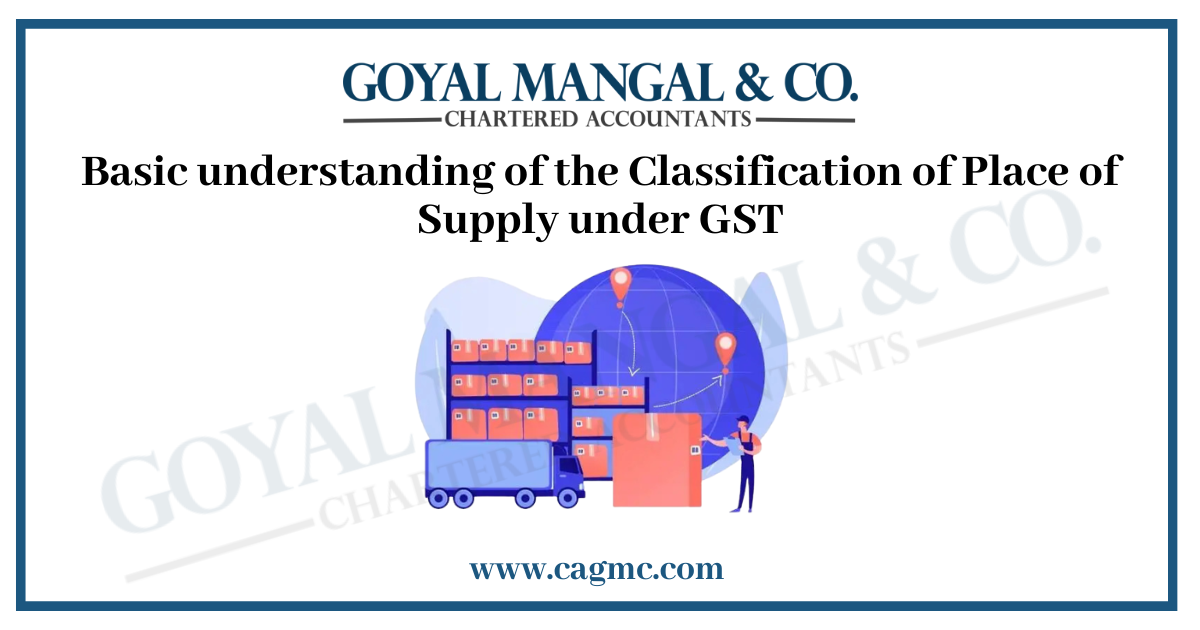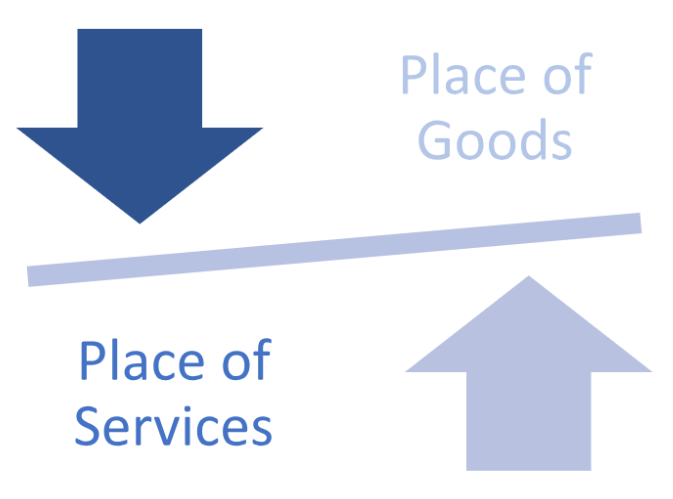
In India, the Goods and Services Tax (GST) is a game changer by simplifying the complexity of indirect taxes. Among its several concepts, the Place of Supply holds a crucial role to determine whether a transaction is inter-state or intra-state. In this article, we are going to explore the concept of Place of supply and classification of place of supply under GST. Understanding this will not only help businesses to do compliance efficiently but also make sure about appropriate tax calculations.
| Table of Content |
Glimpses of Place of Supply under GST
Place of Supply (POS) is a critical concept under the GST system, used to determine the location where a supply of goods or services is deemed to have taken place. The POS is crucial because it decides whether a transaction is treated as an intra-state supply (within the same state) or an inter-state supply (between different states or Union territories). This classification is essential for applying the correct GST rates and ensuring the accurate collection of taxes by the respective state governments.
The determination of the place of supply is vital because different types of GST (CGST, SGST/UTGST, or IGST) are levied based on whether the supply is intra-state or inter-state. The rules for determining the place of supply vary for goods and services, and they are defined in the GST law to maintain consistency and clarity in taxation.
Importance of Place of Supply
The Place of supply plays a crucial role in the GST system for various reasons:
- Tax Jurisdiction: POS helps determine whether a supply is an intra-state or an inter-state transaction. This classification is essential for identifying the respective tax jurisdictions (Central Government and State Governments) that are entitled to collect GST on a particular transaction.
- Applicable GST Rate: The GST rates for intra-state supplies (CGST + SGST/UTGST) and inter-state supplies (IGST) differ. Accurate identification of the place of supply ensures that the correct GST rates are applied, preventing underpayment or overpayment of taxes.
- Division of Revenue: GST is a destination-based tax, meaning the tax revenue is collected by the state where the goods or services are consumed (destination state). Proper determination of the place of supply ensures the fair distribution of tax revenue among the states based on consumption.
- Compliance and Filing: Businesses must maintain records of transactions with the correct place of supply to comply with GST regulations. Accurate POS determination simplifies the process of filing GST returns, reducing the chances of errors and subsequent penalties.
- Input Tax Credit (ITC): ITC can be claimed by businesses on GST paid on inputs used in the supply of goods or services. Proper identification of the place of supply enables businesses to claim the correct ITC, avoiding discrepancies and maximizing tax benefits.
- Cross-Border Transactions: For cross-border transactions (exports and imports), the place of supply rules helps differentiate between zero-rated supplies (exports) and exempted supplies, ensuring seamless international trade.
- E-Commerce Transactions: For e-commerce operators and aggregators, the place of supply rules is vital in determining their GST liabilities, particularly when they facilitate transactions between buyers and sellers from different states.
- Avoiding Double Taxation: Accurate determination of the place of supply helps prevent instances of double taxation where multiple states levy GST on the same supply, leading to tax inefficiencies and complexities.
- Clarity and Uniformity: The place of supply rules in GST brings clarity and uniformity to the taxation system, making it easier for businesses to understand their tax liabilities and comply with the law.
- Consumer Impact: Correct classification of the place of supply affects the final price of goods and services for consumers. An incorrect classification might lead to higher or lower tax burdens on consumers, affecting their purchasing decisions.
Classification of Place of Supply under GST
Let’s delve into the classification of a place of supply under GST in detail for both goods and services:

- Place of Supply of Goods: The place of supply of goods is determined based on the location of the recipient and the location of the goods at the time of supply. There are two main scenarios:
- Intra-state Supply of Goods: If the location of the supplier and the place of supply (location of the recipient) are in the same state or Union territory, it is considered an intra-state supply. The applicable GST for intra-state supplies is divided into two components: Central GST (CGST) and State/Union Territory GST (SGST/UTGST).
For example: If a seller in Delhi sells goods to a buyer in Delhi, it will be an intra-state supply, and the tax levied will be CGST and SGST.
- Inter-state Supply of Goods: If the location of the supplier and the place of supply are in different states or Union territories, it is considered an inter-state supply. The applicable GST for inter-state supplies is the Integrated GST (IGST), which is levied and collected by the Central Government.
For example: If a seller in Delhi sells goods to a buyer in Maharashtra, it will be an inter-state supply, and the tax levied will be IGST.
The place of supply of goods is crucial for determining the state that is entitled to collect the tax revenue, ensuring proper compliance and revenue-sharing between states.
- Place of Supply of Services: It is determining various factors, including the location of the supplier, the location of the recipient, and the type of services being provided. There are different rules for various types of services. Here are some key scenarios:
- Intra-state Supply of Services: If both the supplier and the recipient of services are located in the same state or Union territory, it is considered an intra-state supply. The applicable GST for intra-state supplies of services is CGST and SGST/UTGST.
For example: If a consulting firm in Mumbai provides services to a client in Mumbai, it will be an intra-state supply, and the tax levied will be CGST and SGST.
- Inter-state Supply of Services: If either the supplier or the recipient (or both) is located in different states or Union territories, it is considered an inter-state supply. The applicable GST for inter-state supplies of services is IGST.
For example: If a software company in Bangalore provides services to a client in Chennai, it will be an inter-state supply, and the tax levied will be IGST.
The place of supply rules for services may vary for specific types of services. Such as services related to immovable property, transportation services, intermediary services, etc. It is essential for businesses to correctly determine the place of supply for their services to comply with GST regulations and ensure accurate tax payments.
Conclusion
Through the above-mentioned information, the classification of the Place of Supply under the GST system is a vital element. That significantly affects the transactions of taxation involving goods and services in India. Properly determining the place of supply is essential for ensuring accurate tax collection, maintaining compliance with GST regulations, and facilitating seamless trade between states. For businesses, understanding and adhering to the place of supply rules are paramount to avoid potential compliance challenges, tax discrepancies, and penalties.


